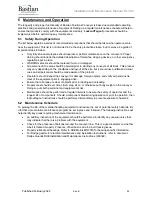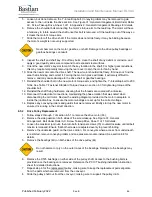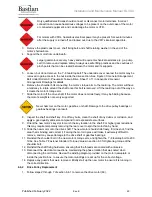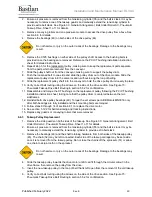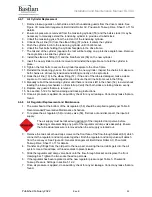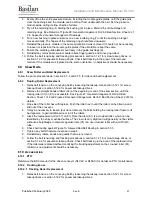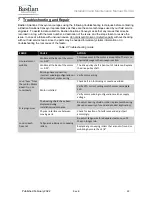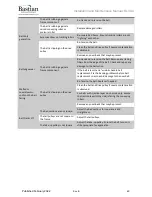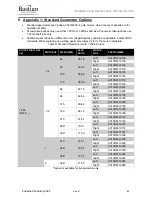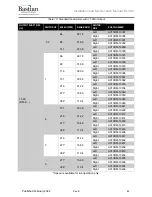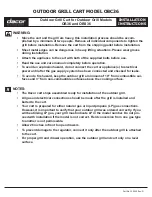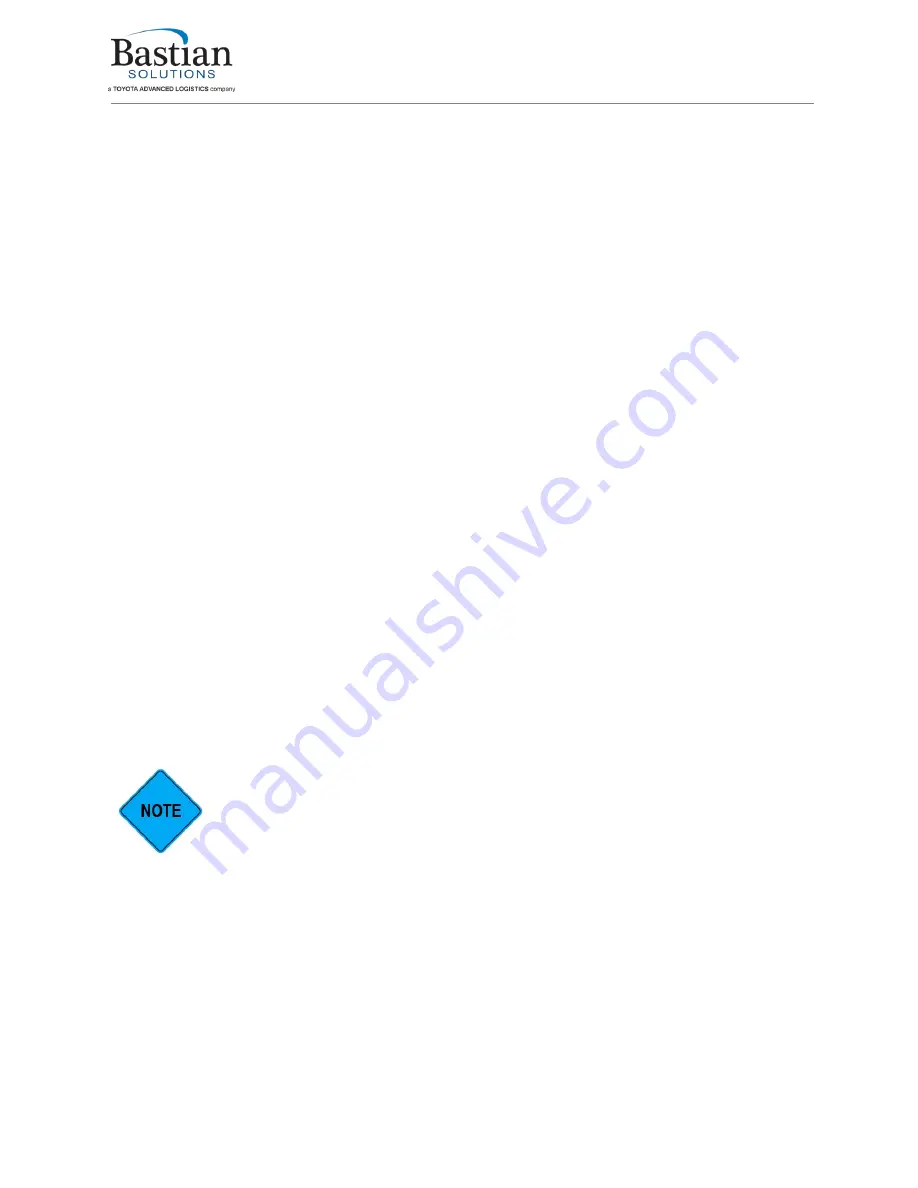
Installation and Maintenance Manual: RLVAC
Published February 2022
55
2. Push on the hex shaft of the tail snub roller (37). The hex shaft is spring-loaded in one direction
only. See Figure 29: General Arrangement, RLVAC Tail, Sheet 1 of 1 for details.
3. Remove the tail snub bracket on the side where the hex shaft cannot be pushed in towards the
center of the conveyor. Do not disturb the tail snub jack screw.
4. Push the spring-loaded hex shaft out of the other tail snub bracket and lift the snub roller up, then
slide it sideways to remove it from the conveyor. On smaller overall widths, it may be helpful to
remove several conveying rollers and gain access from the top.
5. Slide in the replacement snub roller, orienting the spring-loaded hex shaft in the same direction.
6. Push the hex shaft in, slide the snub roller into position, then reinstall the tail snub bracket.
Ensure it is positioned firmly against the tail snub jack screw. If the tail snub jack screw has been
disturbed, set the snub roller square to the frame instead.
7. Reinstall any conveyor rollers that were removed.
8. Follow the belt tensioning and tracking procedures in section 5.12.1 for screw takeup drives, or
section 5.12.2 for pneumatic takeup drives.
6.7.3 Bearing Replacement and Maintenance
1. Periodically grease each bearing following the instructions in the ABB Motors MN3016 bearing
manual. Do not over-lubricate. Too much grease can damage bearing seals or cause excessive
heating.
2. If bearing replacement is necessary, follow the instructions in section 6.7.1.
6.7.4 Roller Replacement
1. Apply pressure on the end of the hex shaft opposite the bands using a small diameter punch or
similar tool until the shaft clears the frame. Be careful NOT to apply a side load to the hex shaft.
2. Provide upward force on the roller body until the hex is sitting above the sideframe. (A putty knife
or other flat surface tool is recommended to be placed between the hex shaft and the inside of
the frame. This will help protect the paint on the sideframe.)
3. Remove the hex shaft from the opposite hex hole.
4. Pull the roller away from the bands until the roller is completely free of the sideframes and bands.
5. Slide the new roller through the bands. Do not use a sharp or small diameter object to stretch the
bands, and do not overstretch the bands (maximum stretch is 30% of the free length).
6. Once the new roller is through both bands, guide the hex shaft into the hex hole.
7. After the hex shaft is in the hex hole, the opposite side shaft can be inserted into the appropriate
hex hole. Use the roller’s length as leverage to aid in this step.
8. Use a putty knife or other flat surface tool to guide the hex shaft into the opposite hex hole.
For banded rollers in the center of a zone, it is easiest to remove rollers one at a time,
starting from one end, until the roller in question is reached.
6.7.5 Band Replacement
1. Follow the procedure in section 6.7.4 until the band is reached.
2. Remove the band and replace it with a new one. It is normal for new bands to be significantly
tighter than used bands.
3. Reassemble the zone following the procedure in section 6.7.4.
6.8 Modules
See Figure 27: General Arrangement, RLVAC Bed Section, Sheet 1 of 2 and Figure 28: General
Arrangement, RLVAC Bed Section, Sheet 2 of 2 in Appendix 2: General Arrangement Drawings for
exploded views and part numbers.


